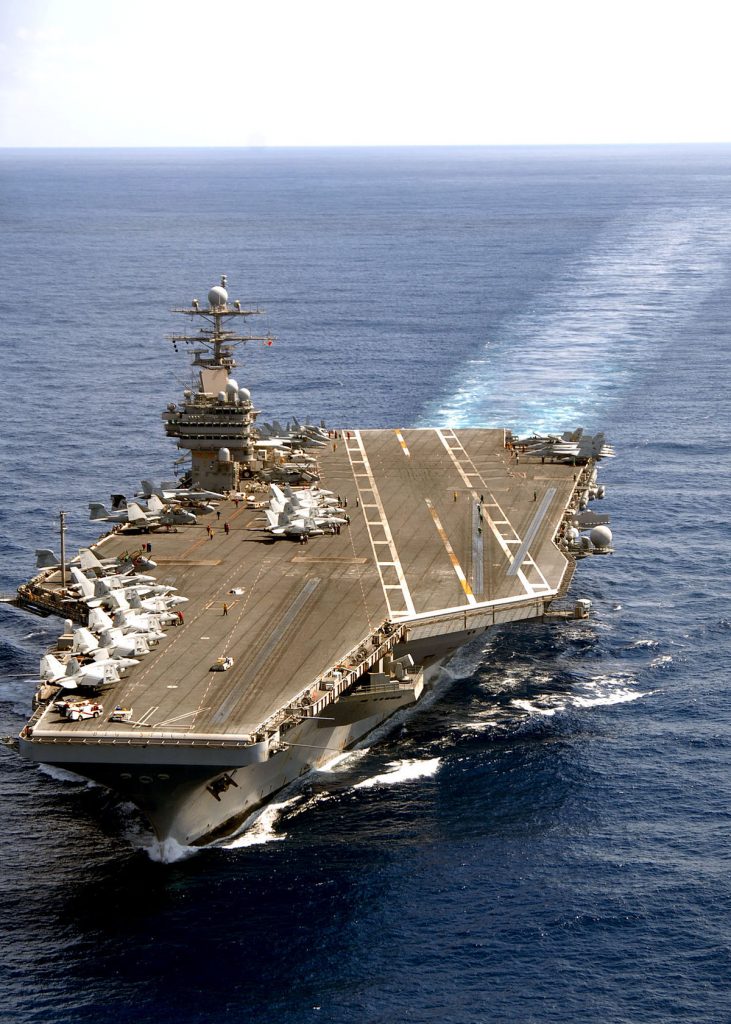Global Conflict and Terrorism Are a Prerequisite for Lucrative Arms Deals. The World’s Major Arms Exporters
A Comparison of Superpowers
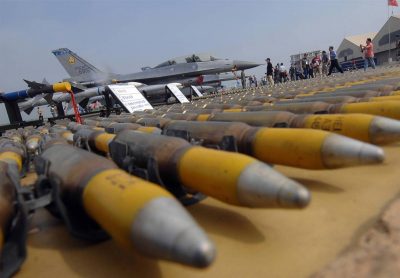
This article was originally published by GR on November 8, 2017
The powerful countries’ economy is now leaning to a great extent on manufacturing and exports of diverse military weapons. A government’s global status and might is now measured by its capacity to invent and fabricate outmatched and super military gears.
A country’s military standing is evaluated on the basis of air power, naval power, manpower as well as nuclear bombs. There is no single power with all these strengths above others. The US, for example, is surpassing rivals on air power whereas Russia has astonishing number of advanced tanks. North Korea’s battleship force outnumbers others including the US.
According to studies conducted by Stockholm International Peace Research Institute [SIPRI], the five biggest arms and weapons importers between 2010 and 2014 were India, Saudi Arabia, China, the United Arab Emirate and Pakistan.
The table below provides data for the period 2012-2016
 Germany’s largest customer was the US, and France and the UK’s major export destinations were Morocco and Saudi Arabia.
Germany’s largest customer was the US, and France and the UK’s major export destinations were Morocco and Saudi Arabia.
In the given period, China replaced Germany as the world’s third largest arms supplier, accounting for 5 percent of international arms exports. China’s top arms purchaser was Pakistan followed by Bangladesh and Myanmar as strategic partners to counterbalance, in particular, India.
The US was the largest arms supplier with 33 percent of international arms exports compared with Russia 23 percent (2012-2016). Both of them combined represent 58 percent of all exports. Russia’s arms industry is projecting boom over bumper sales to India since many years.
Russia’s main markets are China, India and Algeria. The US’s great arms destinations are South Korea, the UAE and Australia. The US sells arms to broader range of clients unlike Russia that has fewer markets.
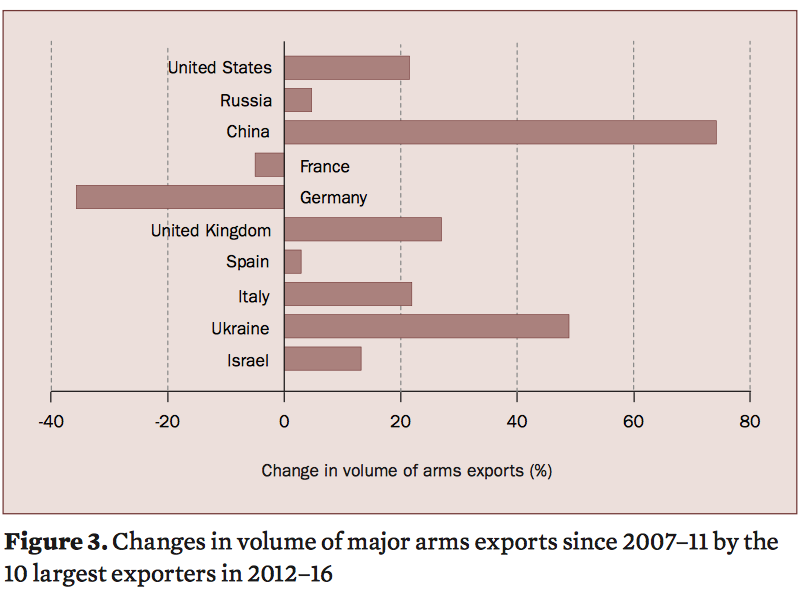
The world’s disputed territories and waters claimed by two states such as Pakistan-India’s strife over Kashmir, Azerbaijan and Armenia’s row over Nagorno-Karabakh, China-Taiwan, India-China, Japan-China, Israel-Syria, among many others, remains to be a magnetic cause for arms purchase. Since arms producing powers’ economy heavily stand on this industry’s exports, the world’s leading governments would not insist on ceasefires anywhere. Russia exports arms to both Armenia and Azerbaijan.
In April 2016, Russian Premier Dmitry Medvedev visited both Armenian and Azerbaijan officials following an armed fight for mediation and said that Russia had no intention of halting arms sales to any side of the conflict.
Other countries like France and Germany have slashed their defense spending and devoted great energy and cost to developing the newest and further sophisticated military systems. Israel’s arms industry grew tremendously which is distinguished for its drones. NATO members flew their Israel-made drones in Afghanistan. Israel spends almost 4.5 percent of its GDP on research and development where the culture of innovation and creativity is dominant.
The world’s top five major arms exporters are the United States, Russia, Germany, France and China which account for 75.8 percent of the entire global arms exports (2012-2016).
If one delves deep into the root causes of terrorism in corners of the world, it may be surprised to find that the real causes of the conflicts are totally different; indeed no logic lies behind as much belligerence and savagery in the name of terrorism. Each time, for instance, an ISIS fanatic’s image with covered face and arm in the hand threatening a country pops up or a missile is fired into Saudi Arabia by Yemeni Houthis, it raise angst and demands for state-of-the-art weapons.
The unrest in the Middle East is believed to have been stoked in part to establish appeal for arms among affluent Arab states. Saudi Arabia is determined to achieve the regional military hegemony by virtue of the US arms. Saudi Arabia is overwhelmed by Iran’s nuclear threats, Yemeni rebel’s resistance, row with Qatar and the ISIS’s battles in the Middle East. The rising international tensions brought Saudi Arabia up to the third largest spender followed by India. This Arab state just declared its plan to build its first nuclear reactors next year. Although it stresses that nuclear program is solely meant for energy supply and peaceful purposes, we might have learned in the past that this oil-rich country is struggling, on the one hand, to not fall behind Iran and, on the other hand, is in pursuit of winning supremacy over other Arab region states.
In early decade, the US had introduced restrictions on the sale of national advanced arms to Arab region states to enable Israel stand ahead of its inveterate foes in the region by exporting own products. A bill was approved by the US Congress in 2008 to allow Israel lead an exclusive arms clout in the region. But following the formation of Saudi-led anti-Iran Alliance, Obama’s administration resumed an earlier level of arms sales which infuriated Israeli officials. Reports reveal that Riyadh and Washington’s arms deals hit US$ 90 billion between 2010 and 2014.
The White House under the Obama administration had endorsed Saudi Arabia-led Military Alliance’s battle with Yemen in a statement. The then undersecretary of the US State Department Antony Blinken visited Riyadh on the second week of Saudi-led military campaign in Yemen and said that this country [Saudi Arabia] is sending a powerful message to Houthis and its allies in Yemen and the US is bolstering it by delivering arms.
According to Swedish SIPRI, the major arms imports have soared in the Middle East over the past few years. As of 2012 to 2016, arms imports skyrocketed by 86 percent in the region.
The US companies were the leading exporters of military equipment and services, according to HIS report.
Boeing hitting the highest of US$ 5.6 billion, followed by Lockheed Martin at US$ 5.1 billion, then Raytheon and Airbus at US$ 3.5 billion and US$ 2.9 billion respectively.
Russia’s UAC holds fifth place with a worth of US$ 2.9 billion.
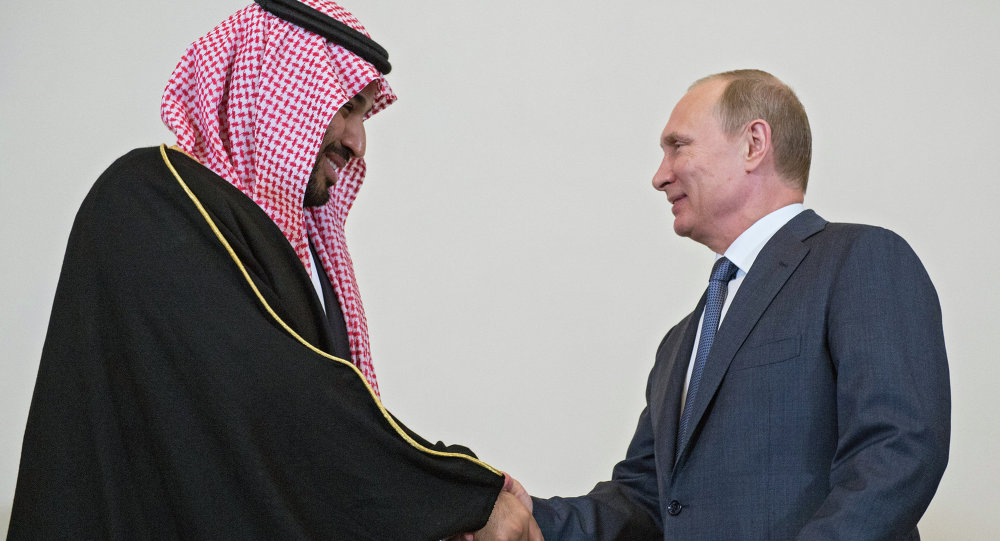 Earlier in October, Saudi King Salman inked a deal worth of US$ 3 billion with Moscow to purchase S-400 surface-to-air missiles among other arms. (image right King Salman with President Putin)
Earlier in October, Saudi King Salman inked a deal worth of US$ 3 billion with Moscow to purchase S-400 surface-to-air missiles among other arms. (image right King Salman with President Putin)
On 25 October, Qatar swept to purchase the same S-400 anti-aircraft system as well as Pantsir-S1 anti-aircraft system, armored vehicles and tanks. Saudi Arabia and Qatar are on the rock and investing hugely on military powers. This could possibly be a foreign conspiracy to push Arab states into purchasing multi-billion dollars worth of arms. Bahrain and Egypt are said 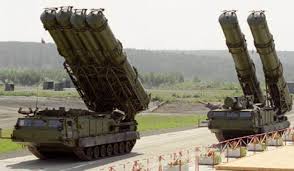 to be next in line to strike similar deals with Moscow. This is while Trump had signed the largest single arms deal in the US history during his visit of Riyadh that amounts to US$ 110 billion.
to be next in line to strike similar deals with Moscow. This is while Trump had signed the largest single arms deal in the US history during his visit of Riyadh that amounts to US$ 110 billion.
Russia’s S-400 Air Defense System
The International Institute for Strategic Studies released a report in 2017 that put powerful militaries on the order of largest manpower. The world’s most populous nation, China, remained unparalleled in number of military forces. First established way back in 1927, China has an army of 2,183,000, followed by India’s 1,395,100 forces. The US is in third place which is nearly followed by archenemy North Korea with 1,190,000 forces, but the US’s army is said to have been best-equipped than every other on the list.
On the other hand, the Global Fire Power’s 2017 study provides a new look into relative strengths and weaknesses of global superpowers. The US overtakes others on possessing far more aircrafts which is put at 13,762. Russia runs only 3794 followed by China and India. On tanks, Russia tops the list with 20,216, then China at 6,457 and the US in third place followed by North Korea and Syria.
The United States adversary North Korea has something to catch up with others and it is battle force ships including frigates, destroyers, corvettes, torpedo boats, patrol boats and others. North Korea has 967, China 714 and then comes US with 415 followed by Iran and Russia.
The aircraft carrier viewed as a nation’s “symbol of strength” on the ocean is the most expensive military system that countries like China and Turkey are scrambling to own. The US leaves others far behind in possession of aircraft carriers that reach 19 in number. (USS Theodore Roosevelt left) France hold second place with 4 carriers followed by Japan, India and the UK with 4, 3 and 2 carriers respectively. Russia and China each has only one.
There is one more thing North Korea surpasses the US and it is submarine force. However, it is believed that NK’s submarine is a lower-cost and less-complicated force. It is limited to coastal waters and has fewer capabilities. The list place North Korea first with 76, the US 70, China 68 and Russia 63 submarines followed by Iran, the UK and France.
The US’s defense spending budget is the highest of all, so is its external debt. China, the world’s leading economy, is behind the US in military spending, perhaps, due to its largest manpower. Saudi Arabia is not lagging and holds third place with US$ 56 billion and then there is India which has emerged as a potential arms market for Russia and the US. The list of external debt, regarded as a downside, first reads the powers deeply plunged into global conflicts. These are the US, the UK, France and Germany while China and Russia fall in ranks 14 and 20.
Every arm producing country is strict to expose the secrets of super features of aircrafts and other military hardware developed uniquely. In 2011, when the US assault team raided on Osama Bin Laden’s compound near Islamabad, it used radar-evading helicopters. The helicopter was damaged while landing and later blown up by the US forces. Reports just revealed that Pakistan had allowed China to examine the wreckage in a bid to discover the critical technology used in the aircrafts that not only escaped radar but also muffled the noise.
In Dec 2011, a US spy drone crashed 140 miles into Iranian soil and later displayed by Iranian state television. As a surprise for technology-hungry Russia and China, the two allies immediately asked Iran to get an insight into the advanced intelligence asset to build a prototype of their own.
In a separate episode in 2001, China managed to get hold of P-3 Orion reconnaissance aircraft operated by the US Navy when it was forced down after a mid-air collision. This allowed China to develop counter-measures to the surveillance systems carried by the Orion which compelled the US to upgrade its entire fleet.



